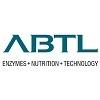Efficacy of a Novel Phytase in Response to Low and High Phytate Diets with Broiler Chickens at Pre-Starter or Starter Phase
Published: June 14, 2024
Source : Q. ZHANG 1, C.L. WALK 2, J.O. SORBARA 2, A.J. COWIESON 2, K. STAMATOPOULOS 2 and J.L. WU 1 / 1 DSM Nutritional Products, Animal Nutrition Research Center, Bazhou, China; 2 DSM Nutritional Products, Kaiseraugst, Switzerland.
An increase in dietary phytate concentration may limit the availability of both phosphorus (P) and calcium (Ca) as a result of the progressive formation of Ca-phytate complexes along the gastrointestinal tract (Selle et al., 2009). However, inconsistent results were reported regarding the impact of phytate on P and Ca release in the presence of phytase with broilers, presumably due to the differences in phytase characteristics, bird age and feeding duration of P-deficient diets (Angel, 2017). To maintain the digestive and absorptive capacity of birds and prevent adaptation to low Ca and P diets, a 36-h feeding period was applied in the current study, which aimed to evaluate the efficacy of a novel phytase on phytate hydrolysis and apparent ileal digestibility (AID) of P and Ca, in response to low and high phytate diets with broilers during the pre-starter or starter phase, which was at day 9 to 11 or day 19 to 21 post-hatch, respectively.
The experimental diets were in a 2 × 5 factorial arrangement with 2 dietary phytate P concentrations (0.24 or 0.34% at pre-starter, 0.22 or 0.32% at starter) and 5 doses of the novel phytase (HiPhoriusTM, DSM Nutritional Products, Switzerland) supplemented at 0, 500, 1,000, 2,000 FYT/kg or extradose (3,000 or 4,000 FYT/kg for low or high phytate diet, respectively). The novel phytase was encoded by a 6-phytase gene from Citrobacter braakii with great improvement in intrinsic temperature (approximately 20˚C increase for thermal unfolding) and pH stability (retains > 90% activity down to pH 2 in the presence of pepsin, Thorsen et al., 2021). The extradosing of phytase was supplemented for nearly complete phytate hydrolysis when considering the phytate levels in the diets. Ten treatments with 10 replicate cages each were fed to birds for 36-hours at 9 to 11 days of age (12 birds per replicate) or 19 to 21 days of age (8 birds per replicate). Body weight gain (BWG) and feed conversion ratio (FCR) were improved (P < 0.05) in birds fed diets supplemented with phytase or diets high in phytate; an interaction between phytase and phytate was observed for 9-11 d FCR (P < 0.05), with a lower dose of phytase being able to minimize 9-11 d FCR for birds fed the high phytate diet. Phytase supplementation improved phytate P degradation, the AID of P and Ca, the AID of P for non-phytate P fraction and the apparent ileal digestible P and Ca (P < 0.05). However, the degree of improvement was influenced by phytate and related to bird age. Briefly, phytase increased digestible P to a greater extent in high phytate diet compared with low phytate diet, regardless of bird age. For birds at pre-starter phase, the ileal phytate P degradation, AID of P and ileal digestible P of low or high phytate diets achieved the maximal values with phytase at 2,000 or 4,000 FYT/kg, respectively, whereas this phytate and phytase interaction was not detected for birds at starter phase. The responses of AID of Ca and ileal digestible Ca were similar for the two phases, with a lower dosage of phytase at 1,000 or 500 FYT/kg (pre-starter or starter) achieving the maximal responses for high phytate diet compared to the 2,000 or 1,000 FYT/kg inclusion (pre-starter or starter) for low phytate diet. In conclusion, phytase effectively hydrolyzed phytate, increased digestible P and Ca, and improved growth performance of broilers. The impact of dietary phytate on phytase efficacy differed depending on bird age.
Presented at the 34th Annual Australian Poultry Science Symposium 2023. For information on the next edition, click here.
Angel CR (2017) XXXIII Curso De Especializacion FEDNA. Adv. Nutr. Aliment. Anim. 141-147 Madrid.
Selle PH, Cowieson AJ & Ravindran V (2009) Livest. Sci. 124: 126-141.
Thorsen M, Nielsen LA, Zhai H-X, Zhang Q, Wulf-Andersen L & Skov LK (2021) Heliyon 7: e07237.
Content from the event:
Related topics:
Mentioned in this news release:
dsm-firmenich
dsm-firmenich
dsm-firmenich
dsm-firmenich
Show more
Recommend
Comment
Share

18 de junio de 2024
Mechanisms of action for Phytase enzymes in poultry diets for enhanced Phosphorus availability to birds :-
1. Since first commercial utilization, phytase has mainly been considered to be a tool to increase phosphorus (P) availability/digestibility from vegetable sources and so to reduce the inclusion of higher cost P sources.
2. Here, phytase releases the P bound in the phytate molecule, increasing the availability/digestibility of this mineral to the animal.
a) Thus, increasing the inclusion rate of phytase would be expected to release additional P from the indigestible feed phytate and consequently allow an even greater substitution of higher cost P sources.
3. Phytate as an anti-nutrient:
a) As more phosphorus is removed from phytate, leading to more breakdown of intact IP-6, the less able it is to bind or chelate minerals, starch or proteins either directly or via ionic bridges (Selle & Ravindran, 2007).
b) Decreasing the binding of these compounds through the use of phytase may directly improve the digestibility not only of phosphorus and divalent cations such as Ca, Zn and Mg, but also indirectly increase energy and nitrogen utilization.
c) It is interesting that the effect of phytase on amino acid digestibility tends to be greatest on those amino acids that are prevalent in intestinal maintenance and turnover, namely cystine, threonine, proline and glycine when measured (Selle et. al., 2006).
4. Several trials with higher doses of phytase using diets with normal levels of P have already shown better poultry performance, but this increase of performance was always correlated to an increase in P digestibility even if the diet did not have lower levels of P.
a) Phytases are digestive enzymes which release plant phosphorus from phytic acid.
b) Monogastric animals lack sufficient phytases to release the phosphorus.
c) Adding extra phytases to the diet increases phytate breakdown and consequent utilization of plant phosphorus.
d) If more phosphorus is available naturally, then less of this substance has to be added to the diet. This greatly reduces feed costs.
5. Research findings on Phytase.
a) It has been clearly shown that phytate solubilizes in the acidic region of the chicken gut, thus this is the critical area of digestion where one needs a highly efficacious phytase to work (Tamim, et al., 2004).
b) The response can vary depending if the product is thermo-tolerant and able to survive the normal pelleting process (Parr and Wyatt, 2006).
c) The intrinsically thermo-tolerant enzymes are clearly the best solution,
6. Right Phytase enzyme in poultry feed:
a) The concept of using phytase at high doses to reduce the anti-nutritional effect of phytate means that there is an opportunity to redefine nutritional knowledge.
b) When using a high dose of phytase to reduce or eliminate the anti-nutritional effects of phytate, special attention needs to be paid to the choice of the correct enzyme.
7. ADPHOS of ABTL is the latest generation of phytase.
a) Fast phytase in the market: highest source of inorganic phosphate sources thus reducing feed cost.
b) Leads to quick release of phosphorus.
c) intrinsic thermostable phytase and is stable in temperature exceeding 85 * C.
d) broader PH activity.
e) in superdosing enhances performance.
f) Better return on investment.
1. Since first commercial utilization, phytase has mainly been considered to be a tool to increase phosphorus (P) availability/digestibility from vegetable sources and so to reduce the inclusion of higher cost P sources.
2. Here, phytase releases the P bound in the phytate molecule, increasing the availability/digestibility of this mineral to the animal.
a) Thus, increasing the inclusion rate of phytase would be expected to release additional P from the indigestible feed phytate and consequently allow an even greater substitution of higher cost P sources.
3. Phytate as an anti-nutrient:
a) As more phosphorus is removed from phytate, leading to more breakdown of intact IP-6, the less able it is to bind or chelate minerals, starch or proteins either directly or via ionic bridges (Selle & Ravindran, 2007).
b) Decreasing the binding of these compounds through the use of phytase may directly improve the digestibility not only of phosphorus and divalent cations such as Ca, Zn and Mg, but also indirectly increase energy and nitrogen utilization.
c) It is interesting that the effect of phytase on amino acid digestibility tends to be greatest on those amino acids that are prevalent in intestinal maintenance and turnover, namely cystine, threonine, proline and glycine when measured (Selle et. al., 2006).
4. Several trials with higher doses of phytase using diets with normal levels of P have already shown better poultry performance, but this increase of performance was always correlated to an increase in P digestibility even if the diet did not have lower levels of P.
a) Phytases are digestive enzymes which release plant phosphorus from phytic acid.
b) Monogastric animals lack sufficient phytases to release the phosphorus.
c) Adding extra phytases to the diet increases phytate breakdown and consequent utilization of plant phosphorus.
d) If more phosphorus is available naturally, then less of this substance has to be added to the diet. This greatly reduces feed costs.
5. Research findings on Phytase.
a) It has been clearly shown that phytate solubilizes in the acidic region of the chicken gut, thus this is the critical area of digestion where one needs a highly efficacious phytase to work (Tamim, et al., 2004).
b) The response can vary depending if the product is thermo-tolerant and able to survive the normal pelleting process (Parr and Wyatt, 2006).
c) The intrinsically thermo-tolerant enzymes are clearly the best solution,
6. Right Phytase enzyme in poultry feed:
a) The concept of using phytase at high doses to reduce the anti-nutritional effect of phytate means that there is an opportunity to redefine nutritional knowledge.
b) When using a high dose of phytase to reduce or eliminate the anti-nutritional effects of phytate, special attention needs to be paid to the choice of the correct enzyme.
7. ADPHOS of ABTL is the latest generation of phytase.
a) Fast phytase in the market: highest source of inorganic phosphate sources thus reducing feed cost.
b) Leads to quick release of phosphorus.
c) intrinsic thermostable phytase and is stable in temperature exceeding 85 * C.
d) broader PH activity.
e) in superdosing enhances performance.
f) Better return on investment.
Recommend
Reply

Would you like to discuss another topic? Create a new post to engage with experts in the community.





.jpg&w=3840&q=75)













